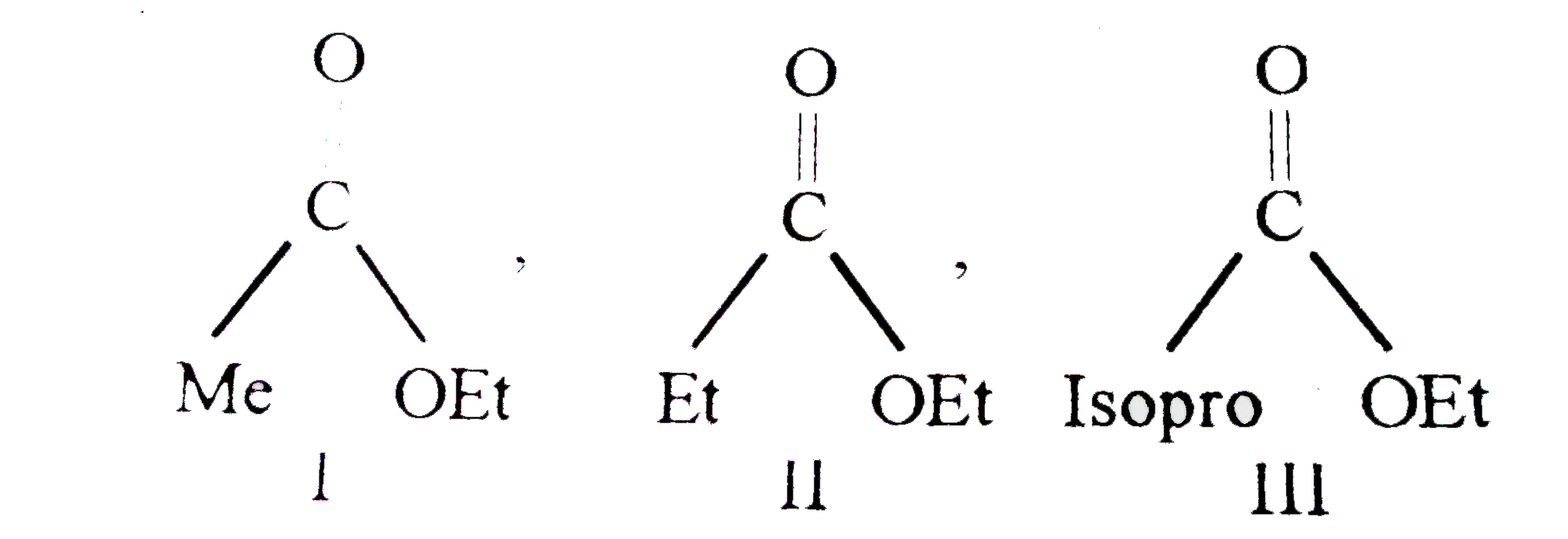The correct increasing order of extent of hydrolysis is
CCl4<MgCl2<AlCl3<SiCl4<PCl5
CCl4<AlCl3<MgCl2<PCl5<SiCl4
CCl4<SiCl4<PCl5<AlCl3<MgCl2
CCl4<PCl5<SiCl4<AlCl3<MgCl2
The correct Answer is:A
To determine the correct increasing order of the extent of hydrolysis for the given compounds, we need to consider two main factors: the oxidation state of the central atom and the availability of vacant d-orbitals for coordination with water molecules. Here is the step-by-step solution:
Step 1: Identify the Oxidation States
First, we need to identify the oxidation states of the central atoms in each compound:
- CCl₄ (Carbon Tetrachloride): Carbon has an oxidation state of +4.
- MgCl₂ (Magnesium Chloride): Magnesium has an oxidation state of +2.
- AlCl₃ (Aluminium Trichloride): Aluminium has an oxidation state of +3.
- SiCl₄ (Silicon Tetra Chloride): Silicon has an oxidation state of +4.
- PCl₅ (Phosphorus Pentachloride): Phosphorus has an oxidation state of +5.
Step 2: Arrange by Oxidation State
Next, we arrange the compounds based on the oxidation states of their central atoms from lowest to highest:
- MgCl₂ (+2)
- AlCl₃ (+3)
- SiCl₄ (+4)
- CCl₄ (+4)
- PCl₅ (+5)
Step 3: Consider the Availability of d-Orbitals
The second factor is the availability of vacant d-orbitals:
- CCl₄: Carbon does not have d-orbitals, so it does not undergo hydrolysis.
- MgCl₂: Magnesium has vacant 3d orbitals, so it can undergo hydrolysis.
- AlCl₃: Aluminium has vacant 3d orbitals, so it can undergo hydrolysis.
- SiCl₄: Silicon has vacant 3d orbitals, so it can undergo hydrolysis.
- PCl₅: Phosphorus has vacant 3d orbitals, so it can undergo hydrolysis.
Step 4: Determine Extent of Hydrolysis
Now, we can determine the extent of hydrolysis based on the oxidation state and the presence of vacant d-orbitals:
- CCl₄: Does not undergo hydrolysis (last).
- MgCl₂: Least extent of hydrolysis due to lower oxidation state (+2).
- AlCl₃: Moderate extent of hydrolysis due to oxidation state (+3).
- SiCl₄: Higher extent of hydrolysis due to oxidation state (+4).
- PCl₅: Highest extent of hydrolysis due to oxidation state (+5).
Final Order
Putting it all together, the correct increasing order of the extent of hydrolysis is:
1. CCl₄ (no hydrolysis)
2. MgCl₂ (least extent)
3. AlCl₃ (moderate extent)
4. SiCl₄ (higher extent)
5. PCl₅ (highest extent)
Thus, the final answer is:
CCl₄ < MgCl₂ < AlCl₃ < SiCl₄ < PCl₅
First, we need to identify the oxidation states of the central atoms in each compound:
- CCl₄ (Carbon Tetrachloride): Carbon has an oxidation state of +4.
- MgCl₂ (Magnesium Chloride): Magnesium has an oxidation state of +2.
- AlCl₃ (Aluminium Trichloride): Aluminium has an oxidation state of +3.
- SiCl₄ (Silicon Tetra Chloride): Silicon has an oxidation state of +4.
- PCl₅ (Phosphorus Pentachloride): Phosphorus has an oxidation state of +5.
Next, we arrange the compounds based on the oxidation states of their central atoms from lowest to highest:
- MgCl₂ (+2)
- AlCl₃ (+3)
- SiCl₄ (+4)
- CCl₄ (+4)
- PCl₅ (+5)
The second factor is the availability of vacant d-orbitals:
- CCl₄: Carbon does not have d-orbitals, so it does not undergo hydrolysis.
- MgCl₂: Magnesium has vacant 3d orbitals, so it can undergo hydrolysis.
- AlCl₃: Aluminium has vacant 3d orbitals, so it can undergo hydrolysis.
- SiCl₄: Silicon has vacant 3d orbitals, so it can undergo hydrolysis.
- PCl₅: Phosphorus has vacant 3d orbitals, so it can undergo hydrolysis.
Now, we can determine the extent of hydrolysis based on the oxidation state and the presence of vacant d-orbitals:
- CCl₄: Does not undergo hydrolysis (last).
- MgCl₂: Least extent of hydrolysis due to lower oxidation state (+2).
- AlCl₃: Moderate extent of hydrolysis due to oxidation state (+3).
- SiCl₄: Higher extent of hydrolysis due to oxidation state (+4).
- PCl₅: Highest extent of hydrolysis due to oxidation state (+5).
Putting it all together, the correct increasing order of the extent of hydrolysis is:
1. CCl₄ (no hydrolysis)
2. MgCl₂ (least extent)
3. AlCl₃ (moderate extent)
4. SiCl₄ (higher extent)
5. PCl₅ (highest extent)
CCl₄ < MgCl₂ < AlCl₃ < SiCl₄ < PCl₅
Topper's Solved these Questions
Similar Questions
Knowledge Check
What is the correct increasing order of extent of deprotonation of the following acids in its aqueous solution?
(I) (CH3)2CHCOOH
(II) CH3CH2COOH
(III) Cl2CHCH2COOH
(IV) CH3CCl2COOHAII<I<III<IVBIV<III<I<IICI<II<III<IVDI<IV<III<IIThe correct increasing order of acidity is:
ACO2>H2O2>H2OBH2O<H2O2<CO2CH2O<H2O2>CO2DH2O2>CO2>H2OThe correct increasing order of acidic strength is
ACH3OH>H2O>(CH3)2CHOHBH2O>CH3OH>(CH3)2CHOHC(CH3)2CHOH>CH3OH>H2ODH2O>(CH3)2CHOH>CH3OH
The correct order of increasing rate of hydrolysis of the following compund is

View SolutionSelect the incorrect trend for extent of hydrolysis
View SolutionThe correct increasing order of boiling points is
View SolutionThe correct order of increasing order of size is
View SolutionThe correct order of relative rate of acidic hydrolysis of the following compound is :


View Solution
